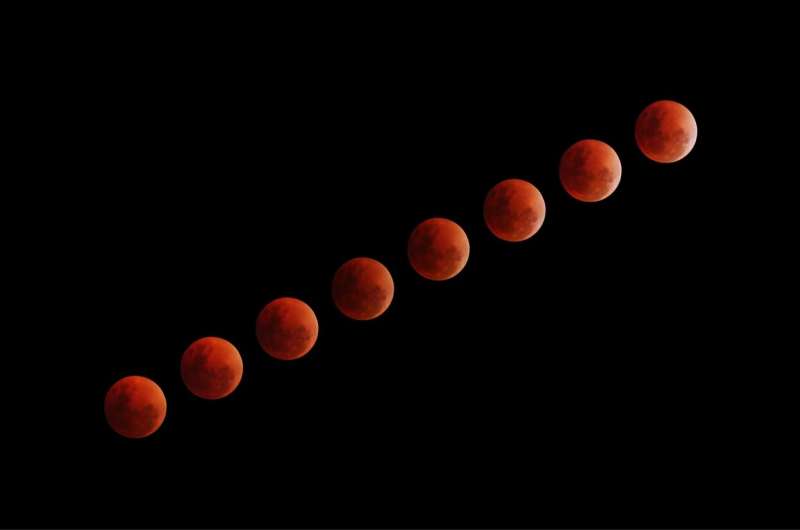The UAE has plans to launch an unmanned rover to the moon by 2024 and is also eyeing future mining projects beyond Earth, as well as space tourism.
It has signed a memorandum of understanding with Richard Branson's space tourism company Virgin Galactic and announced the creation of a "space court" to settle commercial disputes relating to space industries.
Hope's journey
The "Hope" probe lifted off from Japan's Tanegashima Space Center on July 20 last year.
The 1,350-kilogramme (2,970-pound) probe—about the size of an SUV—took seven months to travel the 493 million kilometres (307 million miles) to Mars.
Officials say the "most critical and complex" manoeuvre was on Tuesday when the spacecraft was slowed to be captured by the gravity of the Red Planet.
The probe fired all six of its Delta-V thrusters for 27 minutes to cut its cruising speed of 121,000 kilometres (75,000 miles) per hour to about 18,000 kph.
The process consumes half of the spacecraft's fuel, and it takes 11 minutes for a signal on its progress to reach Earth.
One loop around the planet will take 40 hours.
The "Hope" probe will remain in this phase for about two months, during which further testing will take place, until it is ready to enter the "science" orbit—when its data collection work begins.
Study and inspire
Unlike the other two Mars ventures also this month, the Tianwen-1 from China and Mars 2020 from the United States, the UAE's probe will not land on the Red Planet.
Three instruments mounted on the Hope probe will provide a picture of the planet's atmosphere throughout the Martian year—687 days.
The first is an infrared spectrometer to measure the lower atmosphere and analyse the temperature structure.
The second is a high-resolution imager that will also provide information about ozone levels. And the third, an ultraviolet spectrometer, is to measure oxygen and hydrogen levels from a distance of up to 43,000 kilometres from the surface.
Studying the atmospheres of other planets will allow for a better understanding of the Earth's climate, officials say, and pave the way for scientific breakthroughs.
But the project is also designed to inspire a region too often beset by turmoil, and recall its heyday of scientific advances during the Middle Ages.
"The UAE wanted to send a strong message to the Arab youth and to remind them of the past, that we used to be generators of knowledge," Omran Sharaf, the mission's project manager, told AFP.
The mission makes the UAE the fifth nation to ever reach Mars, and is timed to mark the 50th anniversary of the country's unification.
Explore further
© 2021 AFP



